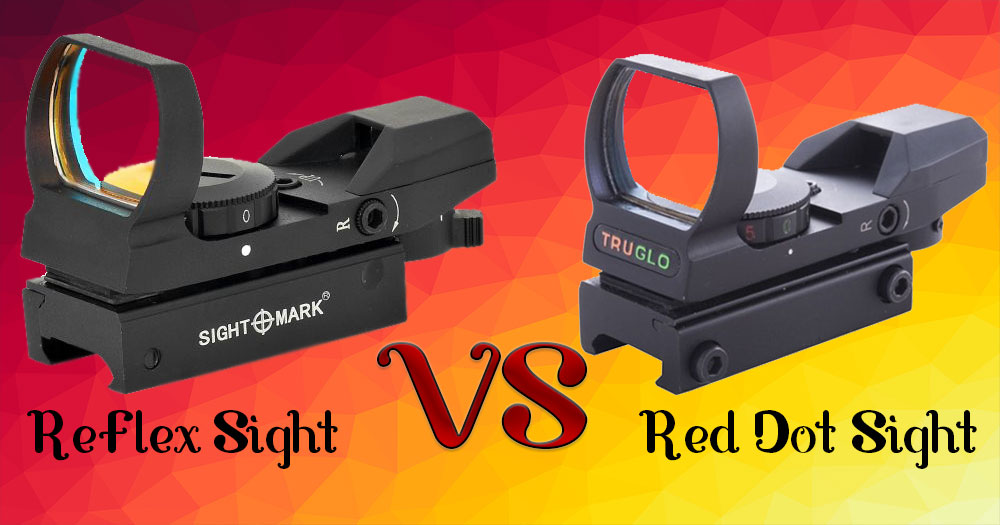It's on okay article, at best....admirable that they went back and updated, but I wish they would have done more: including assigning a more knowledgeable editor help the author with some of the inaccuracies.
And yes, I understand that there's been a progression of technology, but given its last revision date (March of this year, 2021), I'm less than impressed.
First, to suggest that a prismatic sight cannot be used with both eyes open is simply not true - and this is knowledge and experience that has long been known in the industry and hobby. The Trijicon ACOG sets the archetype for this type of use with the Bindon Aiming Concept. Even a traditional riflescope can be shot with both-eyes-open with some training...and heck, with a modern true- and nominal-1x LPVO (low power variable optics) can be used outright as a RDS, with both eyes open, for speed of engagement and without compromising accuracy or precision, as
Practically Tactical and Steve Fisher demonstrate below:
I also wish that the author would have noted that shooters with astigmatism often most clearly visualize the reticle in the prismatic RDS (versus reflex or even holographic) as that etched reticle will not present with optical distortions/artifacts as a projected one would - and also to balanceout this advantage with the note that due to the increased power consumption it takes to illuminate that etched reticle, these sights tend to have lower battery lives than LED-based reflex sights.
In terms of the holographic RDS, I would have liked it if the author would did not suggest that some shooters consider this type of RDS to be "the best" - rather, to have instead kept it objective and noted that for some shooters with astigmatism, the way the holographic reticle is achieved works to eliminate or minimize the visual aberrations seen through that shooter's affected eye(s). While this is not a guaranty (versus the etched reticle of the prismatic), it is nevertheless worthwhile for shooters with astigmatism to at least try a holographic sight during their shopping for a new optic.
Similarly, it's not necessarily only their price-tag that currently makes their use less popular than in years past (witness the high price tags that comparable high-end prismatic and reflex sights demand), but also the fact that due to the need to power the laser that creates the hologram, battery-life in these sights tend to be significantly shorter than reflex-type sights that utilize LED-based optics, and furthermore, that concerns of absolute durability have also driven some users to switch.
It is with the author's write-up on reflex-type RDSs that I have the most problems.
First, I do not agree, at all, that one most often finds either the exposed or enclosed types with any particular type of weapon system. The author's suggestion that an exposed/open type is favored for long-gun use is absolutely unfounded. For one, Aimpoint's "tube" type, enclosed reflex RDS -along with the holographic EOTech and the prismatic Trijicon ACOGs- have dominated military contracts.
Second, to suggest that it is unique to the reflex sight that one's eye does not have to be absolutely aligned with the optic is again completely not true. Instead, this is a quality that's equally claimed among all RDS - and in-reality, even a traditional magnified "scope" can be employed in this manner. The difference here lies instead in how much easier it is to still be able to see a sufficient portion of the target/reticle to achieve acceptable aiming with the RDS versus a traditional magnified scope, with considerations of scope-shadow. However, modern LPVO have both generous eye-relief and eyeboxes, and even if this were discounted, as with prismatic RDS and scope-use where scope-shadow does intrude into the sight picture, proper training and understanding of the downrange effects of not having proper eye alignment can still make for acceptable shots. [
That the author finished this section without clarification regarding claims of "zero parallax" with RDS is also disappointing. For those newer to RDS, the second portion of my post in this old thread shows why manufacturers' claims of "zero parallax" with RDS should be taken with a grain of salt: https://www.thearmorylife.com/forum...-pistol-sights-for-old-eyes.9060/#post-112918 ]
It is also not true that only some reflex sights are able to operate without batter power. Trijicon is typically the name many shooters associate tritium-lamp use with optics and sights, and both various ACOG models (again, prismatic) as well as their defunct RX01NSN 1x24 Reflex (as seen in SOPMOD Block I kits; as its name implies, this is a reflex-type RDS) feature(d) illumination via ambient light amplification (via a fiber-optic light pipe) along with low-light capabilities via tritium phosphor.
Finally, suggesting that a "riflescope that do[es] not have an aiming point" is used to augment the reflex sight in terms of magnification is again doing a dis-service to a less-experienced reader who may have come to this article in the earlier days of their search.... To have simply written the proper description for such a product, a "magnifier," would have both been more exact as well as have helped that beginning hobbyist be better able to conduct product searches on his/her own. [
Also, why was the holographic sight not cited for this same shortcoming, of no inherent magnification? ]

 outdoorever.com
outdoorever.com

 outdoorever.com
outdoorever.com


